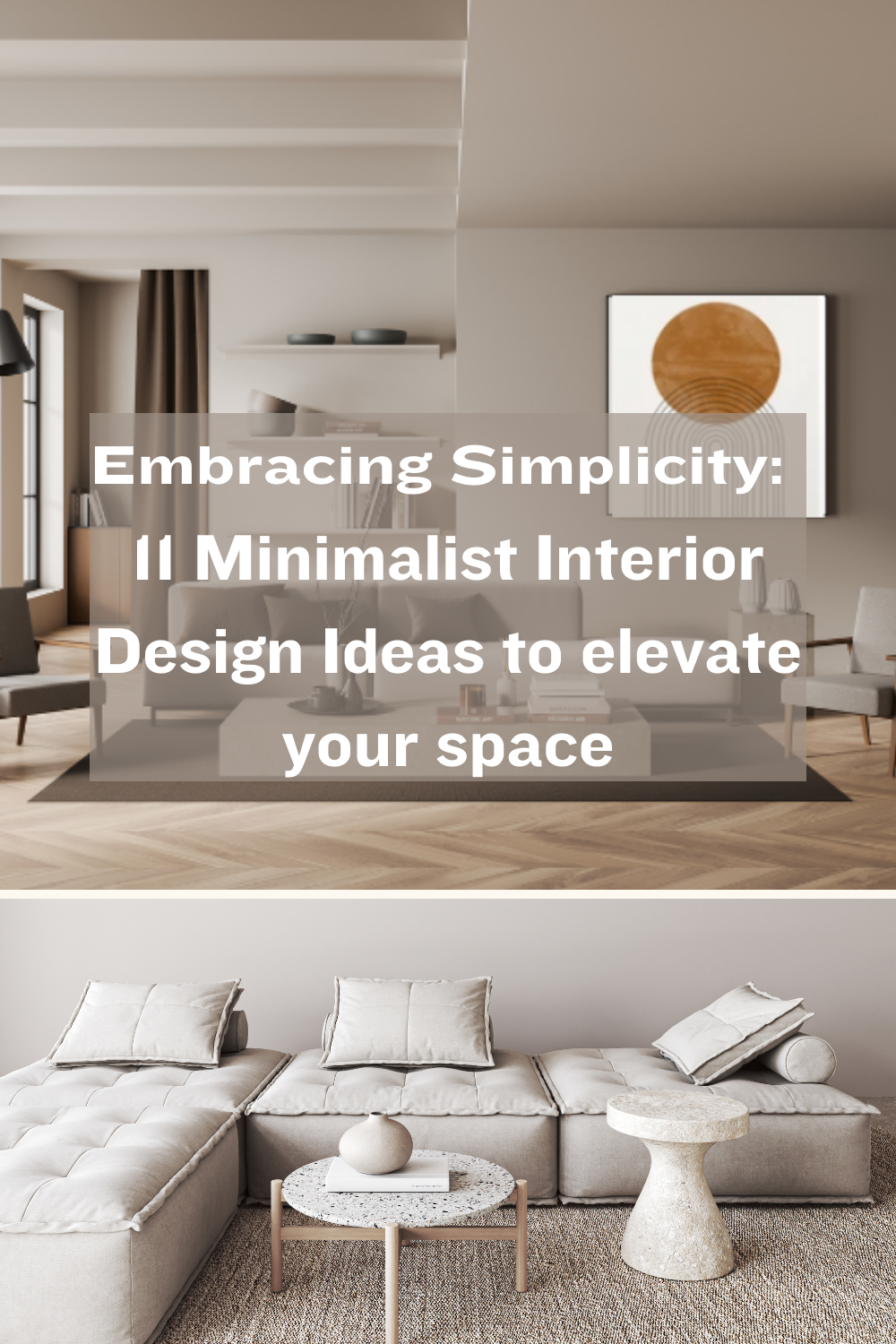You want to learn how to use minimalist interior design ideas to decorate your home.
In minimalist interior design, you will learn to incorporate neutral color palettes, lighting, beautiful materials, functional furniture, and more.
After learning these minimalist design principles, you will confidently create your own authentic space.

In this post, you will learn minimalist interior design ideas for your space, such as a monochromatic color palette using whites, beige, and grays in your décor.
You will learn that less is more, which promotes simplicity, functionality, and harmony within your living space. Therefore, if you are ready to declutter your home, create a serene environment that inspires a tranquil, warm, and welcoming space.
Once you incorporate these elements, you will achieve a sense of achievement that promotes mindful living and a space that reflects your authentic self.
Less is More: Minimalist Interior Design Ideas
01 Declutter and Simplify
The first step to achieving a minimalist interior is to declutter ruthlessly. Clear out unnecessary items and keep only the essentials. Invest in innovative storage solutions like built-in cabinets and hidden compartments to maintain a clutter-free environment.
02 Use Neutral Color Palette
Opt for a neutral color palette dominated by whites, grays, and earthy tones. These colors create a sense of calm and spaciousness, making your space feel more open and inviting. You can use accents of color sparingly to add visual interest without overwhelming the senses.
The monochromatic color palette also uses neutral color schemes. See the related post on how to use a monochromatic color palette.
03 Choose Sleek, but Functional Furniture
Choose furniture pieces that are both stylish and functional. Look for clean lines, sleek designs, and multifunctional features. Invest in pieces that serve a purpose and avoid cluttering your space with unnecessary furniture.
Scandinavian furniture compliments a minimalist decor because of its practical design.
04 Why Less is More
05 Maximize Natural Light
Take advantage of natural light to enhance the sense of space in your home. Keep windows unobstructed, and use sheer curtains or blinds to let in as much light as possible. Mirrors can also be strategically placed to reflect light and create the illusion of a larger space.
06 Clear Surfaces
Avoid cluttering surfaces with unnecessary items. To maintain a clean and organized look, keep countertops, shelves, and tables clear of clutter. Invest in storage solutions like floating shelves and wall-mounted cabinets to keep essentials out of sight but within easy reach.
07 Use Minimalist Lighting
Choose lighting fixtures that are simple yet elegant. Opt for recessed, pendant, or track lighting to illuminate your space without overpowering it. Use dimmer switches to control the intensity of light and create a cozy ambiance.
08 Focus on Texture
Could you incorporate texture into your minimalist design to add visual interest and depth? Mix and match textures like smooth metals, rough wood, and soft fabrics to create a warm environment. Layering textures adds richness to your space, maintaining its simplicity.
09 Choose Quality over Quantity
When it comes to decorating your home, prioritize quality over quantity. Invest in high-quality materials and timeless pieces that will stand the test of time. Quality items look better and last longer, reducing the need for frequent replacements.
10 Use Less Ornamentation and Excessive Decoration
To create a minimalist interior design space, use minimal pattern design and very little decoration.
11 Embrace Mindful Living
Above all, embrace mindful living as a core principle of minimalist interior design. Be intentional about what you bring into your home and how you use your space. Cultivate a sense of gratitude for the things you own and create a home that nurtures your well-being.

Leave a Reply